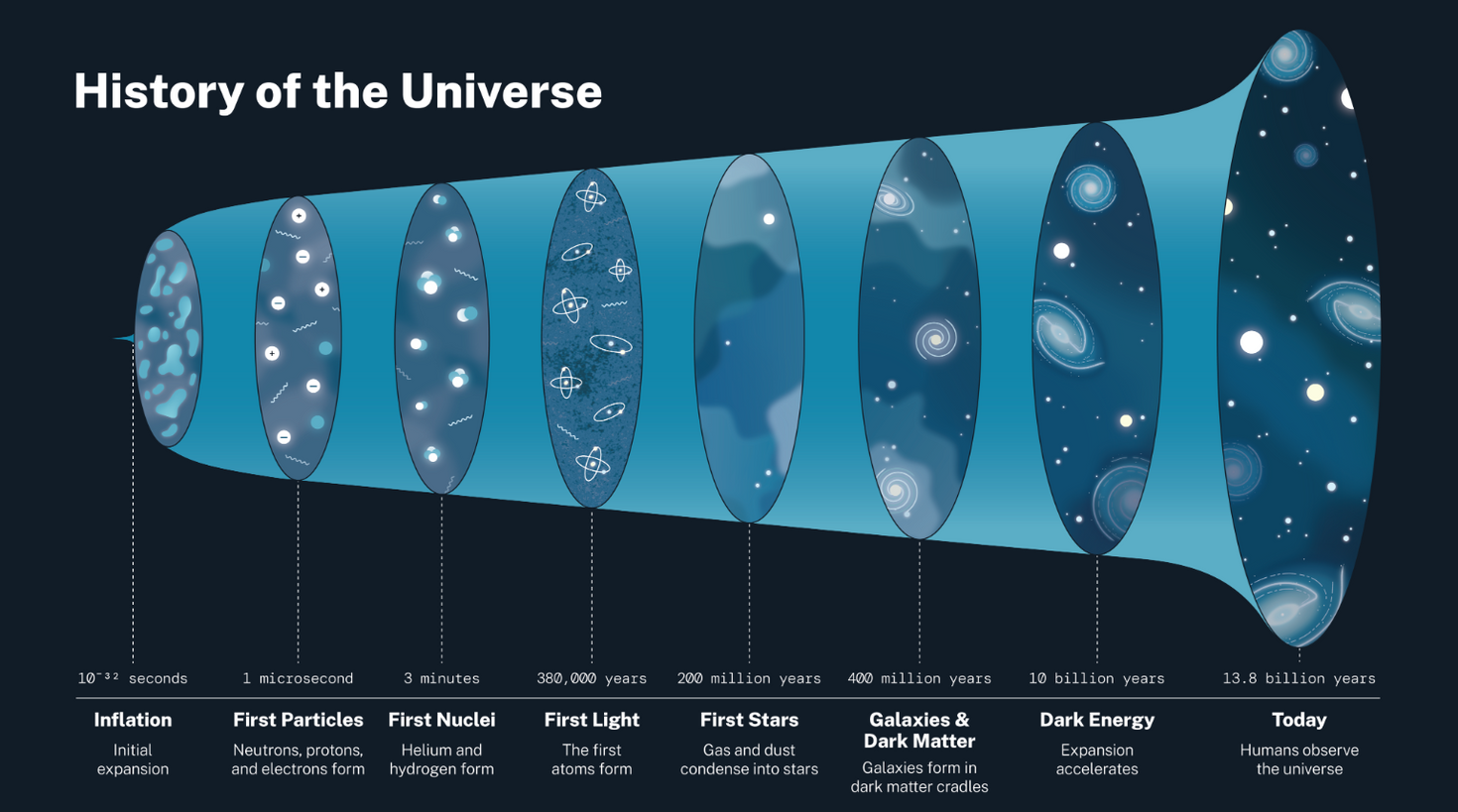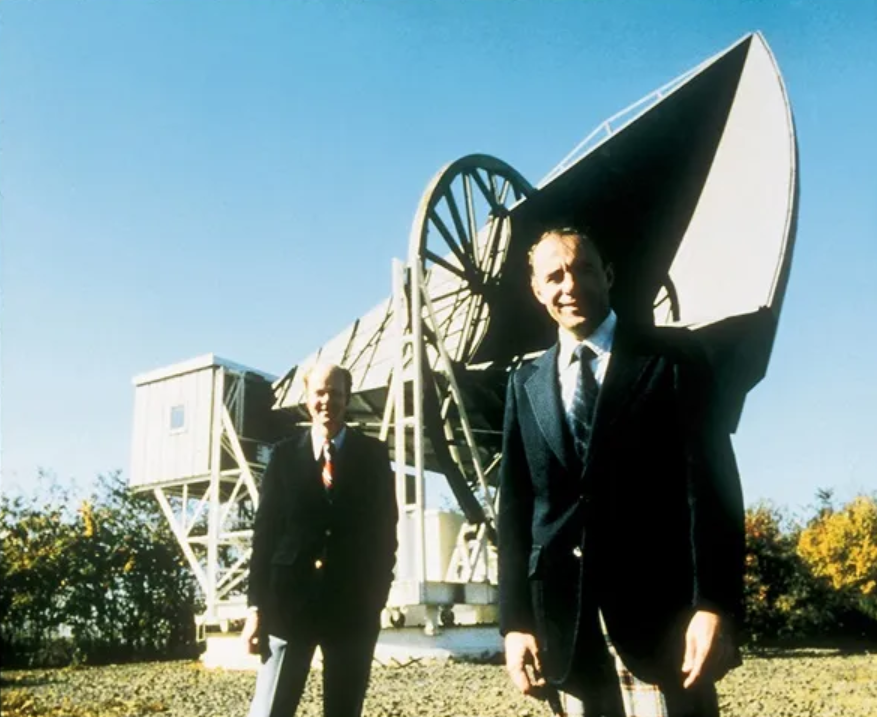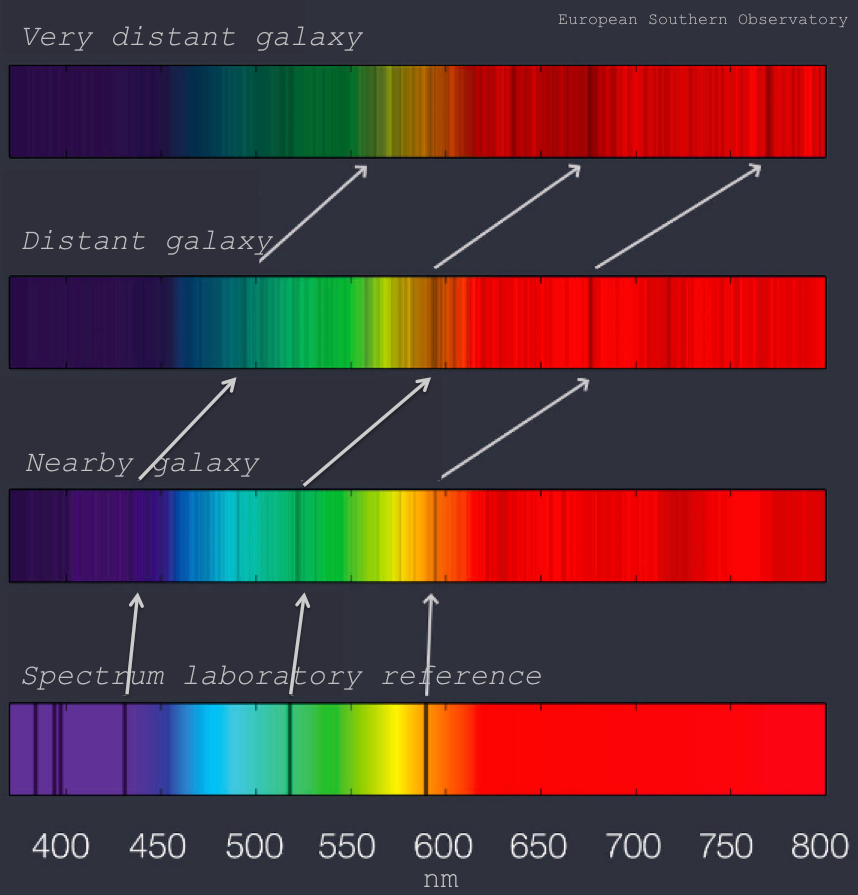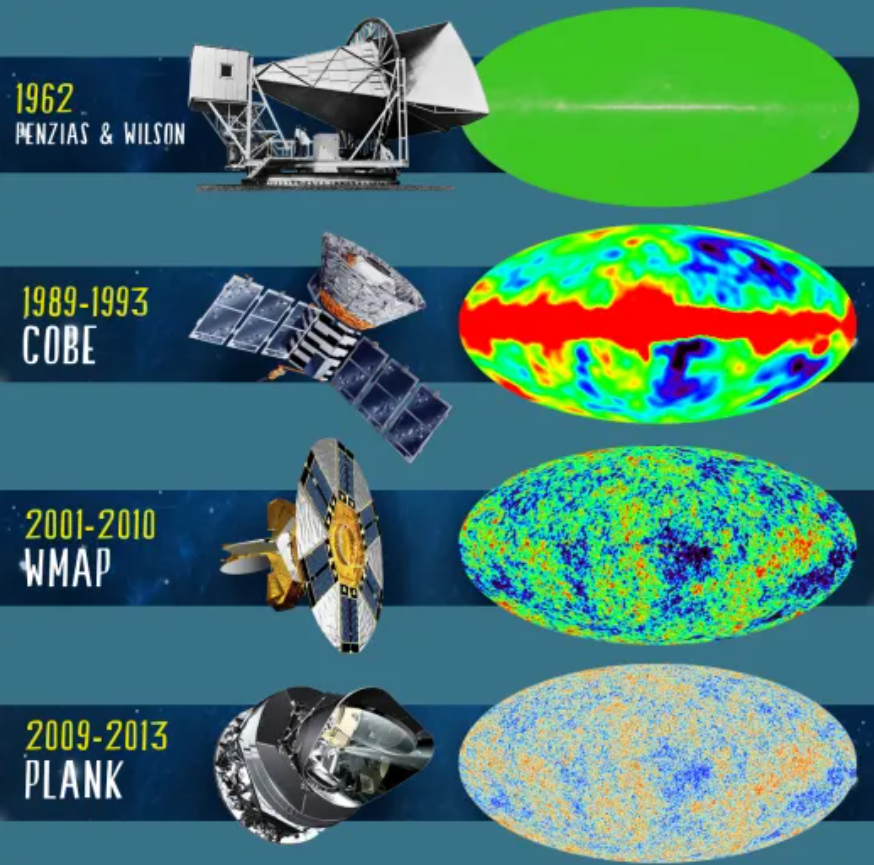

Cosmox Blogs
Cosmic Microwave Background Radiation
In the vastness of space, something significant and very important is called the Cosmic Microwave Background Radiation (CMBR). It's like a faint whisper from when the universe was born, and it holds secrets about how everything began and changed over time. In this article, we're going to learn all about CMBR—where it comes from, what it can tell us, and why it's so important for understanding the universe.
Origins of Cosmic Microwave Background Radiation:
The story of CMBR traces back to the primordial event that gave birth to our universe: The Big Bang. Approximately 13.8 billion years ago, the universe burst forth from an unimaginably dense and hot state, initiating a cosmic expansion that continues to this day at an exponential rate. In the immediate aftermath of the Big Bang, the universe was a seething sea of particles, energy, and radiation. However, as the universe expanded and cooled, a pivotal event known as recombination (or in simple words formation of neutral atoms) occurred roughly 380,000 years later.
During recombination, protons and electrons combined to form neutral hydrogen atoms, marking the moment when the universe became transparent to radiation. Photons, previously trapped in a dense plasma, were now free to travel through space. This cosmic light, once hot and energetic, gradually cooled as the universe expanded, eventually reaching a temperature of approximately 2.7 Kelvin (-270.45 degrees Celsius). Today, we observe this cooled remnant of the Big Bang as the Cosmic Microwave Background Radiation. Note: Initially, for 300,000 years the universe was too hot and dense for light(photons) to travel freely, therefore the universe was opaque for approximately 380,000 years and we simply cannot detect what actually happened in that time period.

Discovery of CMBR:
The discovery of CMBR is an important moment in the history of cosmology, marking the culmination of decades of theoretical speculation and experimental pursuit. In 1964, Arno Penzias and Robert Wilson, two radio astronomers working at Bell Laboratories in New Jersey, made an astonishing discovery while attempting to calibrate a sensitive radio antenna. They detected a persistent background noise, which they initially attributed to terrestrial interference or pigeon poop. However, after immense efforts to eliminate the source of the noise, they realized that it came uniformly from all directions in the sky with the same frequency and intensity.
Simultaneously, researchers at Princeton University led by Robert Dicke were developing theoretical models predicting the existence of relic radiation from the Big Bang. Recognizing the significance of Penzias and Wilson's discovery, Dicke and his team realized that they had accidentally stumbled upon the long-sought Cosmic Microwave Background Radiation. This unexpected convergence of theory and observation provided compelling evidence in support of the Big Bang model and revolutionized our understanding of the universe's early history.

How the wavelength of these Cosmic Radiations stretched (Redshift Spectrum)
As the universe expanded over billions of years following the Big Bang, the wavelengths of cosmic radiation stretched along with it. In the early stages, immediately after the Big Bang, the universe was incredibly hot and dense, filled with energetic photons of light that would have been in the form of gamma rays, X-rays, and ultraviolet radiation. However, as space expanded, these photons gradually lost energy and cooled down, causing their wavelengths to lengthen. This phenomenon is known as cosmological redshift. Over time, the once energetic radiation shifted from ultraviolet to visible light, and eventually to infrared and microwave frequencies. By the time recombination occurred around 380,000 years after the Big Bang, the universe had cooled sufficiently for neutral atoms to form, and the photons had cooled to microwave frequencies, giving rise to the Cosmic Microwave Background Radiation (CMBR).
The redshift spectrum plays a crucial role in understanding the Cosmic Microwave Background Radiation. As the universe expands, the wavelengths of photons traveling through it also stretch, causing their light to shift towards the red end of the spectrum. This redshift effect is directly proportional to the expansion of the universe, with more distant objects exhibiting higher redshifts. The CMBR, originating from a time when the universe was much hotter and denser, has undergone significant redshift due to the universe's expansion over billions of years. The observed redshift of the CMBR provides a direct measure of the universe's age and expansion rate, offering valuable insights into its evolutionary history and fundamental properties.
So at some instance, these cosmic radiations would have been in the visible light spectrum and our universe would have been colorful instead of black.

Properties of CMBR:
Cosmic Microwave Background Radiation exhibits several key properties that provide crucial insights into the nature and evolution of the universe:
Implications for Cosmology:
The study of Cosmic Microwave Background Radiation has profound implications for our understanding of the universe's origins, evolution, and fundamental properties:

Future Prospects:
As technology continues to advance and observational techniques become increasingly sophisticated, the study of Cosmic Microwave Background Radiation remains at the forefront of cosmological research. Future missions and experiments, such as the Atacama Cosmology Telescope (ACT), the Simons Observatory, and the upcoming Cosmic Microwave Background Stage IV (CMB-S4) experiment, promise to further refine our understanding of CMBR and its implications for cosmology.
Conclusion:
In the cosmos, the Cosmic Microwave Background Radiation stands as a testament to the universe's ancient history and enduring mysteries. From its accidental discovery to its profound implications for our understanding of the universe, CMBR continues to captivate scientists and inspire awe and wonder. As we continue to probe its secrets and unravel the cosmic symphony encoded within its whispers, we move ever closer to unlocking the deepest truths of our existence and the universe that surrounds us.

Cosmox Blogs
A non profit organization that works on writing and delivering blogs on cosmology, natural sciences & environment, so that people can learn more about it. We even run a forums page, where our users interacts with each other and discuss about Cosmology, Natural Sciences & Astronomy. We even run an instagram and a youtube channel with podcasts.